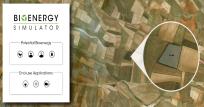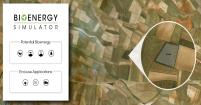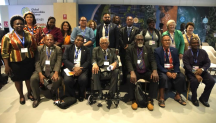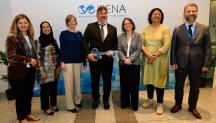

Site-Specific Assessment of Bioenergy Potential is Now Possible with IRENA's Bioenergy Simulator
Newsletter
Bioenergy plays a key role in contributing to the global efforts of decarbonising the energy system, reducing the world’s reliance on fossil fuels, and increasing access to affordable, reliable, and sustainable energy for all, towards the achievement of climate change mitigation goals. However, the global expansion of bioenergy production may increase pressure on land use, leading to competition for food production, deforestation, and other environmental impacts.
Therefore, strategic planning for a modern and sustainable bioenergy development is crucial. Such planning requires careful and detailed site-specific assessments, which include:
- technical, socio-economic, and financial feasibility of the project;
- potential risks associated with the environmental and socioeconomic impacts - including change in land use, conflict with food production, water and soil quality degradation, biodiversity and carbon storage loss, and air pollution;
- possible risk mitigation options - including sustainability governance, local regulations and legislation, certification schemes and best practices.
A combination of existing geospatial datasets and technical conversion factors can provide the needed preliminary assessment of the bioenergy potential within a selected area, which eventually can help determine a specific bioenergy pathway.
In response to this need, the International Renewable Energy Agency (IRENA) developed the Bioenergy Simulator, a web-based geospatial tool that allows users to understand bioenergy potential and related issues in a specific selected area. Developed as part of the Global Atlas for Renewable Energy, the Simulator is now publicly available with these functions:
(i) Showing preliminary indications of the potential bioenergy production for electricity generation, heating, and transportation fuels. This takes into consideration numerous combinations of biomass resources, technologies, energy efficiency conversion factors, and end-uses. It is important to note that this knowledge is provided without assessing the financial viability, the socio-economic feasibility, and the environmental impacts.
(ii) Flagging potential issues related to protected areas, water scarcity, and population density. Potential developers should seek certifications schemes from recognised bodies to guarantee sustainable development.
In utilising this web application, users are encouraged to:
- consider the results from default values only as rough approximations;
- conduct context-specific sustainability assessments to identify the most appropriate biomass feedstock and specific technologies for bioenergy production.
IRENA also welcomes continuous feedback and expert input on areas of improvement through the feedback form available on the Simulator. Reach out to IRENA to contribute data and expertise to the Bioenergy Simulator. Learn more about the capabilities of the Bioenergy Simulator here.




